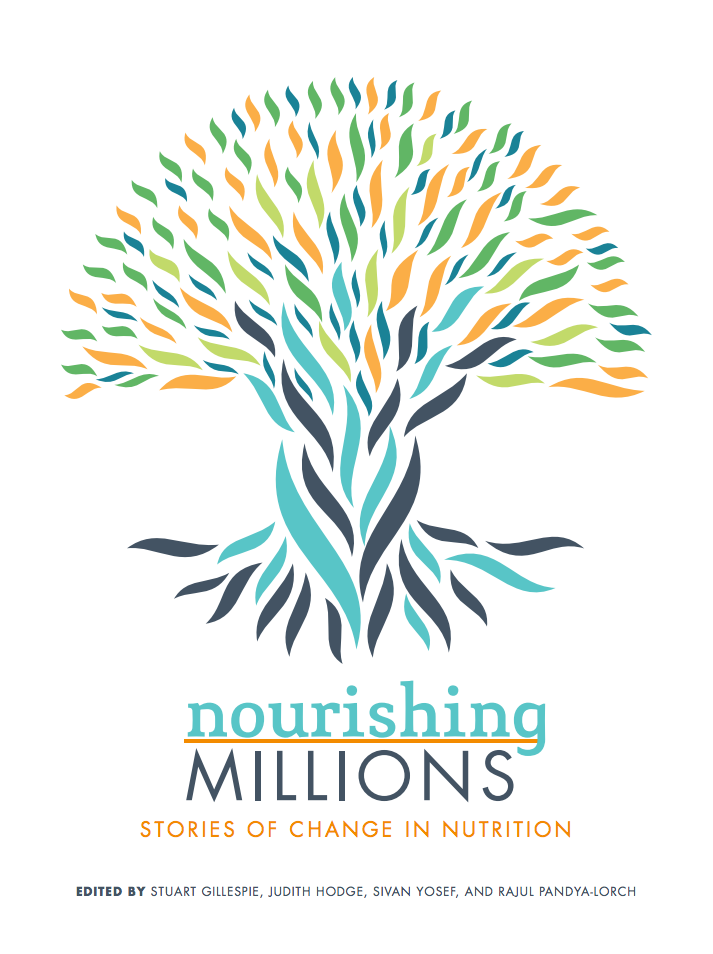Details
Location
Contributions
Displaying 721 - 730 of 2403Links between tenure security and food security: Evidence from Ethiopia
This study uses five rounds of household panel data from Tigray, Ethiopia, collected in the period 1998–2010 to assess the impacts of a land registration and certification program that aimed to strengthen tenure security and how it has contributed to increased food availability and, thus, food security in this food-deficit region.
Climate change and agriculture: Strengthening the role of smallholders
Smallholder farmers have a vital role to play in global food security and nutrition, and in supporting a range of development and climate change goals. Strengthening the resilience and commercial viability of these farmers, particularly women and youth, can increase their capacity to contribute to these global goals.
2016 Global hunger index: Getting to zero hunger
The developing world has made substantial progress in reducing hunger since 2000. The 2016 Global Hunger Index (GHI) shows that the level of hunger in developing countries as a group has fallen by 29 percent. Yet this progress has been uneven, and great disparities in hunger continue to exist at the regional, national, and subnational levels.
Nourishing millions: Stories of change in nutrition
Malnutrition costs the world trillions of dollars, but global commitment to improving people’s nutrition is on the rise, and so is our knowledge of how to do so. Over the past 50 years, understanding of nutrition has evolved beyond a narrow focus on hunger and famine. We now know that good nutrition depends not only on people’s access to a wide variety of foods, but also on the care they receive and the environment they live in. A number of countries and programs have exploited this new understanding to make enormous strides in nutrition.
Farming the planet: 1. Geographic distribution of global agricultural lands in the year 2000
Agricultural activities have dramatically altered our planet's land surface. To understand the extent and spatial distribution of these changes, we have developed a new global data set of croplands and pastures circa 2000 by combining agricultural inventory data and satellite-derived land cover data. The agricultural inventory data, with much greater spatial detail than previously available, is used to train a land cover classification data set obtained by merging two different satellite-derived products (Boston University's MODIS-derived land cover product and the GLC2000 data set).
Global Biogeochemical Cycles
Global Biogeochemical Cycles features research on regional to global biogeochemical interactions, as well as more local studies that demonstrate fundamental implications for biogeochemical processing at regional or global scales. Published papers draw on a wide array of methods and knowledge and extend in time from the deep geologic past to recent historical and potential future interactions. This broad scope includes studies that elucidate human activities as interactive components of biogeochemical cycles and physical Earth Systems including climate.
Exploring the biophysical option space for feeding the world without deforestation
Safeguarding the world’s remaining forests is a high-priority goal. We assess the biophysical option space for feeding the world in 2050 in a hypothetical zero-deforestation world. We systematically combine realistic assumptions on future yields, agricultural areas, livestock feed and human diets. For each scenario, we determine whether the supply of crop products meets the demand and whether the grazing intensity stays within plausible limits. We find that many options exist to meet the global food supply in 2050 without deforestation, even at low crop-yield levels.
Global food demand and the sustainable intensification of agriculture
Global food demand is increasing rapidly, as are the environmental impacts of agricultural expansion. Here, we project global demand for crop production in 2050 and evaluate the environmental impacts of alternative ways that this demand might be met. We find that per capita demand for crops, when measured as caloric or protein content of all crops combined, has been a similarly increasing function of per capita real income since 1960. This relationship forecasts a 100–110% increase in global crop demand from 2005 to 2050.
Closing Yield Gaps: How Sustainable Can We Be?
Global food production needs to be increased by 60–110% between 2005 and 2050 to meet growing food and feed demand. Intensification and/or expansion of agriculture are the two main options available to meet the growing crop demands. Land conversion to expand cultivated land increases GHG emissions and impacts biodiversity and ecosystem services. Closing yield gaps to attain potential yields may be a viable option to increase the global crop production. Traditional methods of agricultural intensification often have negative externalities.
PLOS One
The world’s first multidisciplinary Open Access journal, PLOS ONE accepts scientifically rigorous research, regardless of novelty. PLOS ONE’s broad scope provides a platform to publish primary research, including interdisciplinary and replication studies as well as negative results. The journal’s publication criteria are based on high ethical standards and the rigor of the methodology and conclusions reported.
Scope











